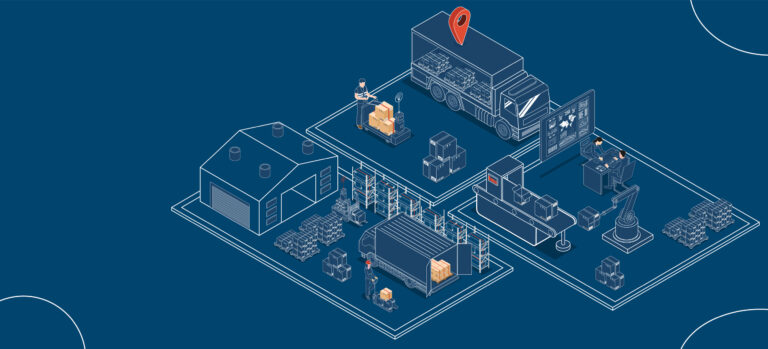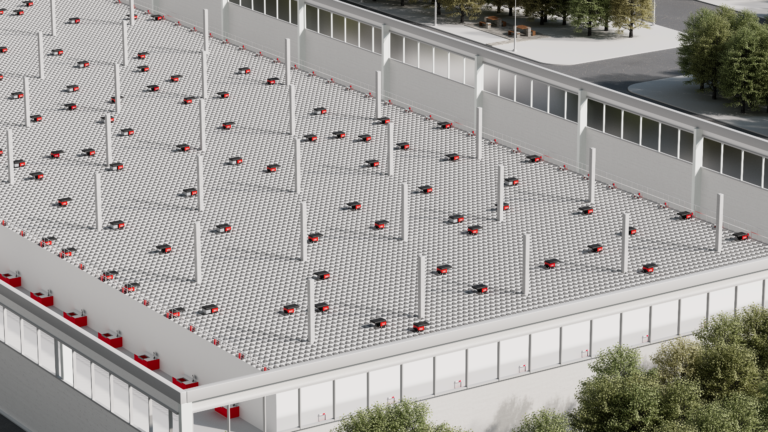In the fast-paced world of warehouse management, change is to be expected. This means that optimizing efficiency is paramount to staying competitive. One of the most effective strategies gaining traction in the industry is the adoption of a put wall system. This innovative approach to order fulfillment revolutionizes traditional manual warehouse operations, offering a multitude of benefits that streamline processes and enhance overall productivity.
In this blog, we will delve into the transformative power of implementing a put wall system in your warehouse. From accelerating order processing to minimizing errors and reducing labor costs, we’ll explore how this advanced technology can elevate your operations to new heights of efficiency and effectiveness. Without further ado, let’s jump in to discovering the world of put wall systems!
What is a put wall system?
A put wall system is a modern warehouse management solution that is designed to optimize order fulfillment processes within a warehouse environment. A put wall usually consists of a series of compartments or slots, each of which are designated for specific orders or Stock Keeping Units (SKUs) that use lights and digital displays to guide warehouse workers through the picking and packing processes for order fulfillment.
The functionality of a put wall system revolves around the concept of batch picking and sorting. As items are picked from designated storage locations, they are brought to the put wall where they are sorted into individual orders or batches. Warehouse staff can efficiently match each item to its corresponding order slot, guided by visual cues or digital instructions. Once all items for a particular order are assembled in their respective slots, the order is considered complete and ready for packing and shipping. For a more visual representation of how they work, check out this video!
Put wall systems are highly configurable and adaptable to various warehouse layouts and operational requirements. They can be integrated with other technologies such as barcode scanners, conveyor systems, and warehouse management software to further enhance efficiency and accuracy. Overall, a put wall system streamlines the order fulfillment process by centralizing sorting activities, reducing travel time for workers, and minimizing errors associated with manual picking and sorting.
A put wall system can be comprised of a pick-to-light system, put-to-light system, or both.
Types of Put Wall Systems
Put-to-Light System
A put-to-light system is a sophisticated order fulfillment solution that operates on the principles of batch picking and sorting. Instead of relying on visual cues or digital displays alone, put-to-light systems will often utilize a combination of lights and alphanumeric displays to guide warehouse workers through the sorting process.
Each storage location or compartment in a put-to-light system is equipped with a light module and a display screen. As items are picked from storage locations, they are brought to the sorting area where the put-to-light system directs workers to place them into the appropriate compartments. These compartments are associated with specific orders or batches, and the system illuminates the corresponding lights and displays relevant alphanumeric codes to indicate where each item should be placed.
The efficiency of a put-to-light system lies in its ability to provide clear, real-time instructions to warehouse staff, minimizing sorting errors and reducing processing time. By leveraging advanced technology and automation, put-to-light systems enable warehouses to handle high volumes of orders with precision and accuracy, ultimately enhancing overall productivity and customer satisfaction. Additionally, these systems can be seamlessly integrated with other warehouse management technologies to create a cohesive and efficient order fulfillment workflow.
Pick-to-Light Systems
A pick-to-light system is another advanced order fulfillment solution designed to enhance efficiency and accuracy in warehouse operations. Unlike put-to-light systems which focus on sorting items into storage locations, pick-to-light systems facilitate the picking process by guiding warehouse workers to the exact location of items within the warehouse.
In a pick-to-light system, each storage location or bin is equipped with a light module and display screen, like put-to-light systems. When an order is received, the pick-to-light system directs workers to the specific storage locations where the required items are located. Lights illuminate at the designated storage locations, indicating to the worker which items need to be picked. As the worker retrieves each item, they confirm the pick by pressing a button or triggering a sensor, prompting the system to update the order status and move on to the next pick.
Pick-to-light systems significantly improve picking accuracy and speed by eliminating the need for paper-based picking lists or manual searching for items. They reduce errors, increase productivity, and enable warehouses to fulfill orders more quickly and efficiently. Furthermore, pick-to-light systems can be integrated with other technologies such as barcode scanners and conveyor systems to create a seamless and automated order fulfillment process.
Similarities and Working in Unison
In terms of relation to put-to-light systems, both pick-to-light and put-to-light systems share similarities in their use of light modules and displays to guide warehouse workers. While pick-to-light systems focus on guiding workers during the picking process, put-to-light systems are used for sorting and consolidating items for order fulfillment. Together, these systems complement each other to create a comprehensive and efficient warehouse management solution.
Benefits of using a Put Wall System

- Increased Efficiency
Traditionally, order picking requires workers to wander throughout the warehouse looking for individual inventory items, manually recording the products picked, and updating the inventory. The picker looks for every unit required for a single order at a time, repeating the process for each order until all orders are filled. This means the picker often makes redundant trips to the same warehouse aisles for different orders, manually updating the inventory record each time.
Instead, a put wall system optimizes the picking, sorting, and packing of inventory items. The picker walks the warehouse with a digital device that guides them to select inventory items from the aisles for several orders at a time and place them in the corresponding numbered bins. This process eliminates redundancies and is significantly faster than picking one order at a time. Likewise, using a put-to-light and pick-to-light system allows workers to quickly identify, sort, and pack multiple orders at a time. Not only does this improve speed and efficiency, but it also improves accuracy.
- Improved Accuracy
Since the put wall system guides pickers to the correct product location, communicates the exact items needed, and automatically updates the inventory, inventory errors are less likely to occur. Because the lights instruct pickers precisely what to pick, there’s little risk of them selecting an incorrect product or quantity because of poor labeling. In addition, the inventory record for a single unit is not updated multiple times in a row, reducing the chance that an incorrect number will be recorded. With improved accuracy, customers will always receive the correct items and quantities they ordered, leading to higher customer satisfaction.
- Augment Productivity
Filling individual customer orders one at a time is simply not productive. When orders are filled faster and more accurately, the warehouse is more productive. Time is not wasted on walking the same aisles multiple times and updating the same inventory records, attempting to correct mistakes in orders, or understanding what caused inventory errors.
Likewise, workers can focus on picking and packing more orders instead of redoing the same orders. Real-time inventory updates from the system also help warehouse managers identify inefficiencies in the order fulfillment process, giving them data to make better decisions for the warehouse.
- Scale Operations
Many industries including e-commerce, B2B wholesale, and retail distribution are faced with challenges related to seasonality, fluctuations in demand, and supply chain issues. All of these challenges require your warehouse to be flexible with your output and scale your operations accordingly. However, manual warehouse management isn’t very scalable without incurring dramatically higher labor and material costs.
With a put wall system, warehouses can reduce or expand operations as needed. This empowers companies to meet changing customer demand, grow operations, and service higher volumes of inventory without the same labor requirements. A put wall system requires less than half the labor required for traditional warehouse management, which helps to scale operations while reducing costs.
- Cut Costs
Using a put wall system enables warehouses to optimize worker efficiency, order accuracy, and warehouse productivity. Likewise, costs can be reduced across the board with fewer inventory errors, reduced order inaccuracies, and lower labor needs. Inaccurate orders can result in high rates of returns, which are expensive. Preventing the need for returns also helps companies save money.
With the increased inventory capabilities of the put wall systems, there is less space required for inventory storage, freeing up room on the warehouse floor. The put wall system is one of the lower price points for warehouse automation, allowing companies to reap the benefits of automation without sacrificing large parts of the warehouse budget.
Disadvantages of Put Wall Systems
While put wall systems offer numerous advantages in optimizing warehouse operations, there are also some potential disadvantages to consider:
- Initial Investment Costs: Implementing a put wall system requires a significant upfront investment in both hardware and software, like any form of automation. The cost of purchasing and installing the necessary equipment, such as compartments, lights, displays, and integration with existing warehouse management systems, can be substantial.
- Space Requirements: Put wall systems typically occupy a considerable amount of floor space within the warehouse. This can be a challenge for warehouses with limited space availability or those looking to maximize storage capacity. Additionally, the layout and configuration of the put wall may need to be carefully planned to ensure optimal workflow and accessibility.
- Complexity of Implementation: Integrating a put wall system into existing warehouse operations can be complex and time-consuming. It may require extensive reconfiguration of workflow processes, staff training, and adjustments to inventory management systems. This complexity can lead to disruptions in daily operations during the implementation phase.
- Maintenance and Technical Issues: Like any technology-driven system, put wall systems require regular maintenance and technical support to ensure optimal performance. Malfunctions or technical issues with components such as lights, displays, or software can disrupt order fulfillment operations and may require prompt troubleshooting and repair.
- Limited Flexibility: Once installed, put wall systems may lack the flexibility to adapt quickly to changes in order volume, product mix, or warehouse layout. Adjustments to the system’s configuration or expansion to accommodate growth may require additional investments and downtime, potentially impacting overall operational agility.
While these disadvantages are worth considering, they can often be mitigated with careful planning, investment in proper training and maintenance, and strategic integration of put wall systems within the broader warehouse management framework.
During the global pandemic there were massive shifts and unexpected variables when trying to navigate through the e-commerce distribution market. The French clothing company, LACOSTE, was no exception as their e-commerce presence grew by nearly 550%.
The systems in place were more automated to handle the higher volumes for Retail utilizing SDI Element Logic’s higher speed automated unit sorters, while the lower volume DTC orders were processed utilizing SDI Element Logic’s put wall technology.
The put walls proved to be pivotal, enabling LACOSTE’s partner, American Consolidation Inc., to handily process the huge increase in Direct-To-Consumer orders. Their original put wall system was designed to be easily expanded and was installed in 2015. It had 50 cubbies– one cubby per order and had been expanded to three additional put walls since the demands of the pandemic.
Frequently Asked Questions
- How does a put wall system improve order accuracy?
Put wall systems improve order accuracy by providing clear visual guidance to warehouse staff during the sorting process. Each item is assigned to a specific slot or compartment within the put wall, reducing the likelihood of errors associated with manual sorting. Additionally, the use of lights or digital displays ensures that workers place items in the correct locations, minimizing misplacements and inaccuracies.
- Can a put wall system accommodate different warehouse layouts and configurations?
Yes, put wall systems are highly adaptable and can be customized to suit various warehouse layouts and operational requirements. Whether your warehouse employs a traditional racking system, shelving units, or automated storage and retrieval systems, put wall systems can be integrated seamlessly into existing infrastructure. With flexible configurations and modular designs, put wall systems can be tailored to fit the specific needs and constraints of your warehouse space.
- How does a put wall system impact warehouse efficiency and productivity?
Put wall systems significantly improve warehouse efficiency and productivity by streamlining the order fulfillment process. By centralizing sorting activities and reducing the time spent traveling between storage locations, put wall systems optimize workflow and minimize labor-intensive tasks. This results in faster order processing times, reduced fulfillment errors, and ultimately, increased throughput and customer satisfaction. Additionally, the real-time visibility provided by put wall systems enables warehouse managers to track order status and performance metrics, facilitating continuous improvement and operational excellence.
In Conclusion
The implementation of a put wall system in your warehouse can bring about a significant transformation in efficiency and accuracy in order fulfillment operations. By centralizing sorting activities, reducing travel time for workers, and minimizing errors associated with manual picking and sorting, put wall systems streamline processes and enhance overall productivity.
Despite potential initial investment costs, space requirements, and complexities in implementation, the benefits of a put wall system far outweigh the drawbacks. With careful planning, proper training, and strategic integration within the broader warehouse management framework, put wall systems can revolutionize your warehouse operations, making them more agile, responsive, and competitive in today’s dynamic market.
Embracing this innovative technology can position your warehouse for success, enabling you to meet the growing demands of customers and stay ahead of the competition in the ever-evolving landscape of logistics and supply chain management. SDI Element Logic can provide custom put wall systems to expertly serve your individual warehouse needs. With years of industry experience modernizing warehouse systems, we have the knowledge and expertise to help you optimize your order fulfillment processes and satisfy your customers.



